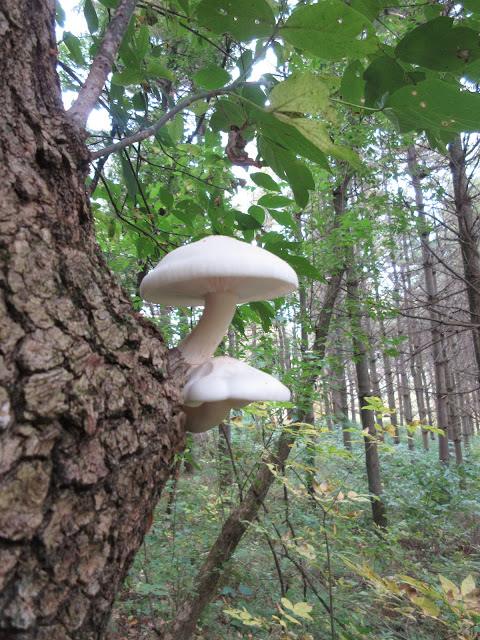Guest Post by KVR Instructor Nicholas WazeeGale
The vibrant colors, shorter days, and cool nights signal to all our senses that Autumn is here. It may seem that with all the plant life fading away, nature’s abundance is going with it, but the truth is just the opposite to the forager. As many plants are readying for the cold they create so many of the best and most hearty foods of the seasons. Roots and tubers, nuts and some seeds, certain greens, a fruit or two, and many mushrooms all offer us much to look forward to.
Many folks do some foraging at one time or another during the year. Morels, black raspberries, that asparagus patch down the road, or perhaps hickory nuts get us out there to seek nature’s bounty in the woods and fields. And though this activity has gained much popularity in recent years, it is obviously nothing new to folks of older times, be they Native Americans who originally held these lands or older farm families of the area.
Here are just a few local plants and fungi that you may want to be keeping an eye out for in the weeks to come.
Jerusalem Artichoke is a tall and robust stalked plant of creek-side meadows. It is one of many wild sunflowers of our area, and looks not unlike a slender version of our garden sunflowers with multiple smaller yellow flower heads. It is now wrapping up its flowering, but the stalks are still there and the trick to confirming that you have found this fine friend of the forager is in the more slender but sunflower-like lanceolate leaves and the distinctly rough stalk. The edible treasure is underground around the base of the stalk. This plant grows elongated segmented tubers that taste earthy, nutty and sweet. They are formed now, and tasty, but get more digestible as the plant dies back.
Black Walnut trees have a reputation as a nuisance for the mess the nuts make or the chemical alterations to the soil they make to reduce competition. However if you are looking for something that is relatively easy to identify and stock up on for the winter months, here’s your willing guide. With tall stature, long divided leaves turning yellow, and soon to be piles of round green hulled nuts, you should be able to find a walnut tree nearby. Many may have had their flowers nipped by frost this year, but some ought still to produce nuts. This nut needs to be hulled (all unprotected hands will be stained dark brown), rinsed, dried and cured for later cold season cracking. Drying must be done in a single layer of nuts in a sunny, airy, yet squirrel free spot for a week or two, and then the curing can be done with them in boxes, two or three nuts deep for at least a month in an indoor location. Walnuts need a hard crack but have a large meat and a distinctive flavor and richness.
Foraging is a connecting, rewarding, and habit-forming outdoor activity, but it comes with some serious responsibility. Always know with certainty what you are harvesting and consuming, and cross reference between field guides when learning something new. Make sure those who teach you are knowledgeable and eat what they teach. Always eat small amounts of any wild food, particularly mushrooms, the first time you try them. Harvest responsible amounts of these plants and fungi as some species are uncommon or reproduce slowly, and we must respect these organisms, their natural communities, and others of our kind who forage. After covering these cautions it is also very important to have fun and enjoy the adventure of foraging! What better way to participate in nature and get to observe and learn so much of what is out there than a lifelong natural world treasure hunt! We were literally made for it. And I truly believe that those who forage with care inevitably become some of the most aware and concerned advocates for wild places.
If you are interested in learning more there are many directions to go. You can get some good guides, like Sam Thayer’s books on wild edibles which are filled with great stories and information. You can find credible edibles classes near you, like my upcoming class with the Driftless Folk School. Also, seeking out groups in your area that do foraging is potentially a good way to learn from knowledgeable and experienced foragers. And feel free to check out my Instagram posts that are frequently edibles-related during these seasons @nicholas.wazee.gale















